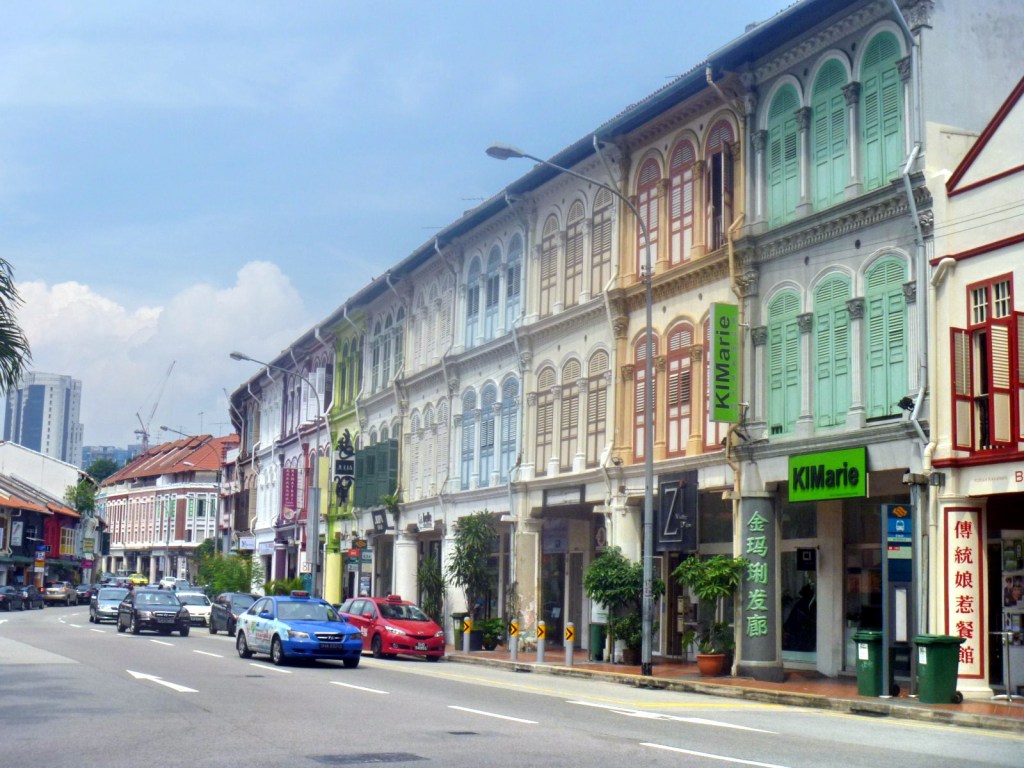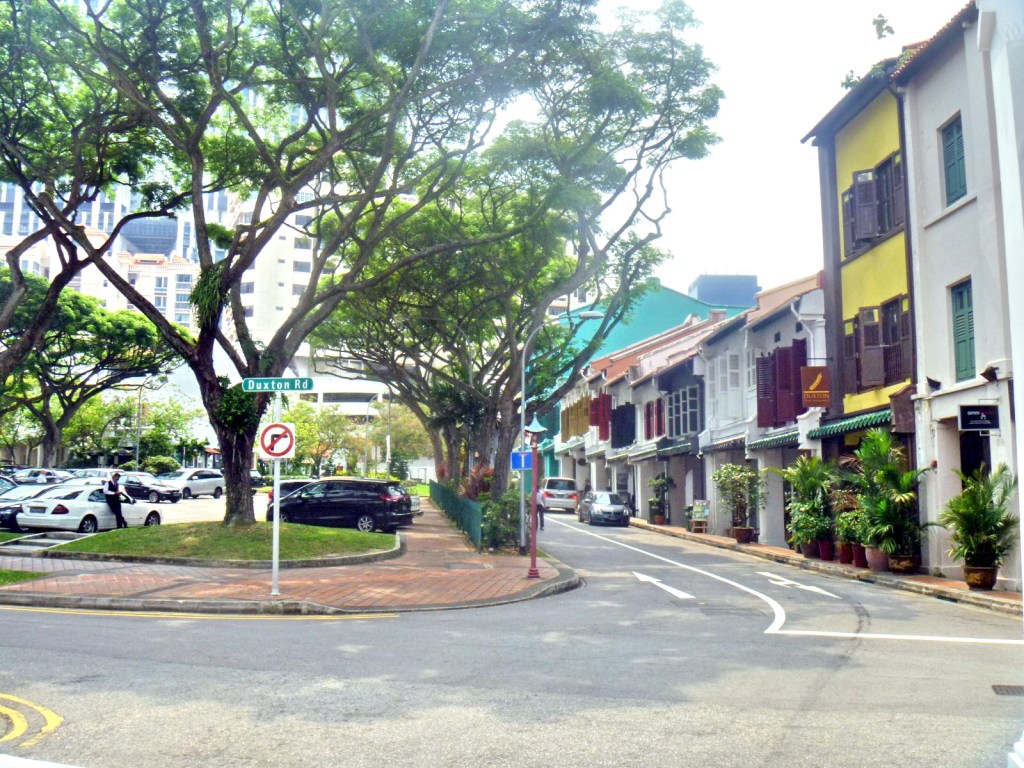After a Big Mac lunch at a nearby MacDonald’s outlet and a short nap at our hotel room, Jandy and I started our own walking tour of the city. The Amara Hotel Singapore was within walking distance to the Tanjong Pagar Conservation District, along the fringes of Chinatown and Raffles Place. Characterized by soaring skyscrapers and rows of exquisitely preserved pre-World War II shophouses, it is bounded by Neil Rd., Maxwell Rd., Peck Seah St., Wallich St., Tanjong Pagar Rd. and Craig Rd.. This was first in our itinerary.
This historic district was formerly a Malay fishing village and, from the mid 19th century, an enclave for thousands of immigrant Chinese and Indian dock workers (Tanjong Pagar was where Singapore’s waterfront used to be before reclamation). It was also once the lucrative center of operations for rickshaw pullers awaiting clients and their presence was so prevalent that, in 1904, the government established a Jinricksha Station, Singapore’s last reminder of the once ubiquitous rickshaw, at the junction of Tanjong Pagar Rd. and Neil Rd..
On July 7, 1989, Tanjong Pagar became the first area to be gazetted under the Singapore government’s conservation plan. Many of the area’s more than 200 2 and 3-storey shophouses of the Early, Transitional and Late Shophouse Styles, built between 1870 and 1940, were beautifully restored to their original appearance. Today, it has become a fashionable district, her rows of shophouses filled with thriving businesses such as cafes, bars, a large number of bridal saloons and restaurants.
The slopes of Duxton Hill was the site of a 13-hectare nutmeg plantation owned by Dr. J.W. Montgomerie (1797–1856), who was an Assistant Surgeon in the service of the Government. Upon his death, the land was auctioned off and 14 acres went to Syed Abdullah bin Omar Aljunied, an Arab who divided them into 4 lots which were leased to wealthy Straits Chinese developers who, by the 1890s, had built 2 and 3-storey shophouses.
The earlier shophouses, of Chinese design, feature low, squat proportions and minimal ornamentation while later ones combined colonial and ethnic elements such as Chinese panel frescoes and Malay timber fretwork.





Website traffic doesn’t come easy these days. It’s hard and it usually takes a long time. In many cases, too much time… So much that you might be ready to give up. Someone shared a website traffic service with me on my site and I thought I would share it with you. I was skeptical at first but I tried their free trial period and it turns out they are able to get hundreds of visitors to anyones website every day. My advertising revenue has increased tenfold. Check it out here: https://www.google.com/#q=seoaccelerator.net%2Ftraffic2